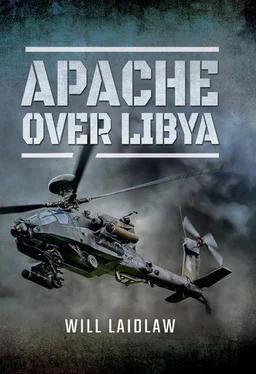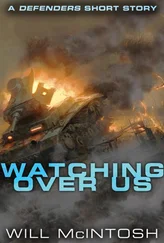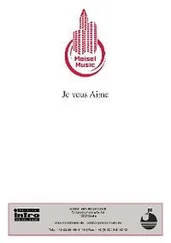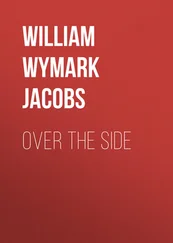He hurried along the passageway towards his planning space, turning his head and speaking fast and quietly: ‘Got some interesting news and some very interesting news. Which first?’ He was excited. Perhaps he’d organized another Hellfire range, I thought. That would be good, more live firing at sea to get the procedures as good as we could.
‘Well, let’s remain calm and start nice and easy with the entry-level interesting news,’ I replied with jovial sarcasm.
We got to the planning area and Chris rushed past the Apache compartment. I stopped to enter, but Chris beckoned me onwards. He was now standing outside the Intelligence compartment. ‘Step into our shack, old boy.’ He punched in the simplex code and pushed open the heavy steel door. Inside stood the Commodore’s senior Intelligence analyst and the Chief of Staff.
Chris introduced me: ‘This is Will Laidlaw, he’s our Apache man in Ocean.’
Things now started to get serious. The senior man took over the conversation: ‘Okay, all the usual caveats. This is a Secret space and this information is very sensitive…’ He drew back a curtain on the bulkhead, uncovering a map. ‘I know you’ve heard talk of Libya. Well, here it is!’
Politics was on the march. The Commodore had been asked to generate a plan to get involved in Libya after the big political and military hitters in Paris and London decided more needed to happen. Chris James had to show what the Apache might offer. That morning, while he presented his estimate to the Commodore, the ticker-tape newsreel at the foot of Sky News read, ‘British Government to send Apache helicopters to Libya.’ The decision had already been made.
The Chief of Staff described how the Secretary of State for Defence had agreed with the Prime Minister and President Sarkozy of France that helicopters would be used in the attack role in Libya. This was shocking, obvious and logical all at once. I had been warmed up to this, not least by the suspicious urgency of the early May Hellfire range off Gibraltar. The now constant media speculation was fed into Ocean through television, email and telephone calls home. On the telly a smorgasbord of experts, not a flying hour or a trigger-pull to their name, lent their opinions, presumably trousering a tidy fee as they did so. We’d been discussing the ‘what ifs’ in the wardroom amongst ourselves. Libya had been a plausible target for a few weeks.
‘There’s a ministerial submission which sets out your boundaries, the dos and don’ts, and risk.’ The senior man took over again. He was focused on the mission. He pointed at Brega in the east. This was where we were going.
‘Both the regime and the rebels need Brega to secure oil and fresh water. It’s a stalemate. You may remember the news footage of rebels and pro-Gaddafi fighters skirmishing up and down a road, gaining and losing, gaining and losing. This is that road. It runs from Benghazi in the north-east around the coast, past Brega and on toward Misrata.’ His finger traced the map. ‘You can see it then continues all the way up to Misrata and onwards to Tripoli. Control the road, control troop movement and logistics. Control Brega, control oil and water for the eastern side of Libya… We’ll get to Misrata later.’
I drew a slow, deliberate breath, nodding in recognition. The road to Tripoli would start at Brega.
I had been expecting a conversation about options in Libya, but this was one-way. I wasn’t being asked if it was feasible or what sort of activity the Apache could contribute to. That had been done. The decision had been made. We were going to Libya. The purpose of this conversation was to tell me where, when and how.
The senior man continued:
As for targets, there’s everything you would expect from a modern Army at war. Tanks, artillery, armoured personnel carriers and logistics vehicles, but also a lot of ‘technicals’ – pickup trucks with large calibre weapons mounted on the rear. In Brega the armour is all up on the front line. We don’t have boots on the ground so we won’t go mixing it right up there – too much possibility of fratricide. We have placed a Restricted Fire Line a few kilometres into the pro-Gaddafi side. You will operate on the pro-Gaddafi side of that. This means we know you are definitely hitting regime equipment. Also, hitting him back from the front line will severely disrupt his supply chain and get on top of morale.
I had to give vent to the voice in my head: ‘Always behind enemy lines. We can do that.’ I looked at Chris: ‘It’s going to have to be as fast as we can go and low-level flying, very low-level.’
‘Yes,’ he replied. ‘We have a call with the Air Warfare Centre scheduled for later today. We’ll get their view on the flight profile, but from what I’m seeing I agree. Very low, dynamic manoeuvring, fast decisions.’
The senior man continued:
There are over 20,000 MANPADS in Libya. They top out at 11,000 feet and the jets are at least another 10,000 feet above that. You are the only NATO asset they can reach. Not even the Predator drones are going low enough to get shot. The triple-A is big too. Again, the jets can’t get caught, they’re out of range. Pro-Gad is going to try and get you, he can’t catch anything else.
‘Pro-Gad’. A new phrase, the new enemy. It would work its way into almost every conversation for the rest of that summer.
The Chief of Staff joined in:
Your overarching mission is to have a cognitive effect on the regime. We’re not going to win a war with a handful of Apaches, but they have a formidable reputation. You are feared the world over. You only need to go to Libya occasionally to reinforce that reputation with the target audience in Tripoli. That’s where the effect needs to be – right in the minds of the regime. The NATO aim for attack helicopters, driven by London and Paris, is to intensify the pressure on the regime. It is risky, it is dangerous and we’ll do our best to mitigate that for you. Part of that is keeping you in the NATO air campaign so we can have jets watching over and the Pred looking for targets.
Psychological pressure; creating more problems for Gaddafi than his troops could answer; relieving the pressure on the rebels and, perhaps, creating some openings for them to exploit. This was our mission. We didn’t need to be hitting targets day and night to achieve this. We didn’t need to fly past Tripoli on a sunny afternoon to demonstrate the power of the newcomer in the war. I wanted to fight at night, as dark as possible. Night and Hellfire, the message would be clear enough. I envisaged flying two or three sorties a week. The NATO planners would allocate us the targets. Chris and his team were heading off to Italy to join them and make sure our missions were helicopter-shaped.
The part where I was invited to speak was in answer to the question ‘So, tell us what you need?’
I was happy with the proposition, not least because I knew that Chris would never let a bad plan stick. He’d handed command of 656 to me two years earlier and been a keen supporter of our development of the maritime capability. He was also an Apache original, having trained in the USA, instructed on the UK conversion course and then taken 656 to Afghanistan twice. He was a details man, too, and he knew the Apache in combat as well as anyone anywhere. And he could talk a lot.
Just as I was about to list Hellfire variants, more 30mm and rockets as well as more chaff and flare as top of my list, Chris went into monologue overdrive:
I have gone through all the right channels and requested both Afghanistan variants of Hellfire, as many as they can give us, 30,000 rounds of 30mm and as many rockets as they have. Chaff and flare are on the list too. You’ll get another aircraft in two days time, with a fifth arriving in about a week. We just have some clearances with regard to storing Hellfire and rockets to finish off. It’s about the total explosive content of the magazine, something the Navy are dealing with. Any odds and ends your team need the engineers can bring out with the aircraft, but move fast, they’ll be on their way to Brize Norton first thing in the morning.
Читать дальше












